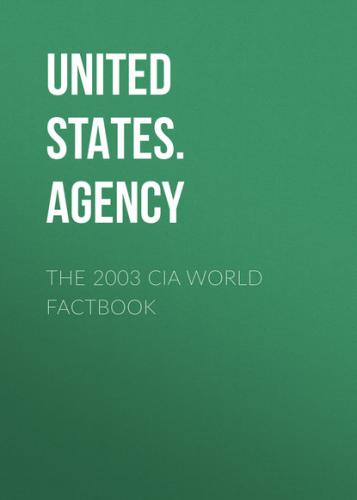Forestry, an important export earner, provides a secondary
occupation for the rural population. Rapidly increasing integration
with Western Europe - Finland was one of the 11 countries joining
the European Economic and Monetary Union (EMU) on 1 January 1999 -
will dominate the economic picture over the next several years.
Growth in 2003 was held back by the global slowdown but will pick up
in 2004 provided the world economy suffers no further blows.
GDP:
purchasing power parity - $133.8 billion (2002 est.)
GDP - real growth rate:
1.6% (2002 est.)
GDP - per capita:
purchasing power parity - $25,800 (2002 est.)
GDP - composition by sector: agriculture: 4% industry: 34% services: 62% (2002 est.)
Population below poverty line:
NA%
Household income or consumption by percentage share: lowest 10%: 4.2% highest 10%: 21.6% (1991)
Distribution of family income - Gini index:
25.6 (1991)
Inflation rate (consumer prices):
1.9% (2002 est.)
Labor force:
2.6 million (2000 est.)
Labor force - by occupation: public services 32%, industry 22%, commerce 14%, finance, insurance, and business services 10%, agriculture and forestry 8%, transport and communications 8%, construction 6%
Unemployment rate:
8.5% (2002 est.)
Budget:
revenues: $36.1 billion
expenditures: $31 billion, including capital expenditures of $NA
(2000 est.)
Industries:
metal products, electronics, shipbuilding, pulp and paper, copper
refining, foodstuffs, chemicals, textiles, clothing
Industrial production growth rate:
5% (2002 est.)
Electricity - production:
71.2 billion kWh (2001)
Electricity - production by source: fossil fuel: 39% hydro: 18.7% other: 11.8% (2001) nuclear: 30.4%
Electricity - consumption:
76.18 billion kWh (2001)
Electricity - exports:
1.81 billion kWh (2001)
Electricity - imports:
11.77 billion kWh (2001)
Oil - production:
0 bbl/day (2001 est.)
Oil - consumption:
211,400 bbl/day (2001 est.)
Oil - exports:
101,000 bbl/day (2001)
Oil - imports:
318,300 bbl/day (2001)
Natural gas - production:
0 cu m (2001 est.)
Natural gas - consumption:
4.557 billion cu m (2001 est.)
Natural gas - exports:
0 cu m (2001 est.)
Natural gas - imports:
4.567 billion cu m (2001 est.)
Agriculture - products:
barley, wheat, sugar beets, potatoes; dairy cattle; fish
Exports:
$40.1 billion f.o.b. (2002)
Exports - commodities:
machinery and equipment, chemicals, metals; timber, paper, pulp
(1999)
Exports - partners:
Germany 11.8%, UK 9.6%, US 9%, Sweden 8.5%, Russia 6.6%,
Netherlands 4.6%, France 4.5% (2002)
Imports:
$31.8 billion f.o.b. (2002 est.)
Imports - commodities:
foodstuffs, petroleum and petroleum products, chemicals, transport
equipment, iron and steel, machinery, textile yarn and fabrics,
grains (1999)
Imports - partners:
Germany 14.5%, Sweden 10.9%, Russia 9.9%, UK 5.7%, France 4.3%,
Denmark 4.2% (2002)
Debt - external:
$30 billion (December 1993)
Economic aid - donor:
ODA, $379 million (2001)
Currency:
euro (EUR)
note: on 1 January 1999, the European Monetary Union introduced the
euro as a common currency to be used by financial institutions of
member countries; on 1 January 2002, the euro became the sole
currency for everyday transactions within the member countries
Currency code:
EUR
Exchange rates:
euros per US dollar - 1.06 (2002), 1.12 (2001), 1.09 (2000), 0.94
(1999)
Fiscal year:
calendar year
Communications Finland
Telephones - main lines in use:
2,847,900 (2001)
Telephones - mobile cellular:
3,728,600 (2001)
Telephone system:
general assessment: modern system with excellent service
domestic: cable, microwave radio relay, and an extensive cellular
net provide domestic needs
international: 1 submarine cable; satellite earth stations - access
to Intelsat transmission service via a Swedish satellite earth
station, 1 Inmarsat (Atlantic and Indian Ocean regions); note -
Finland shares the Inmarsat earth station with the other Nordic
countries (Denmark, Iceland, Norway, and Sweden)
Radio broadcast stations:
AM 2, FM 186, shortwave 1 (1998)
Radios:
7.7 million (1997)
Television broadcast stations:
120 (plus 431 repeaters) (1999)
Televisions:
3.2 million (1997)
Internet country code:
.fi
Internet Service Providers (ISPs):
3 (2002)
Internet users:
2.69 million (2002)
Transportation Finland
Railways: total: 5,850 km broad gauge: 5,850 km 1.524-m gauge (2,400 km electrified) (2002)
Highways:
